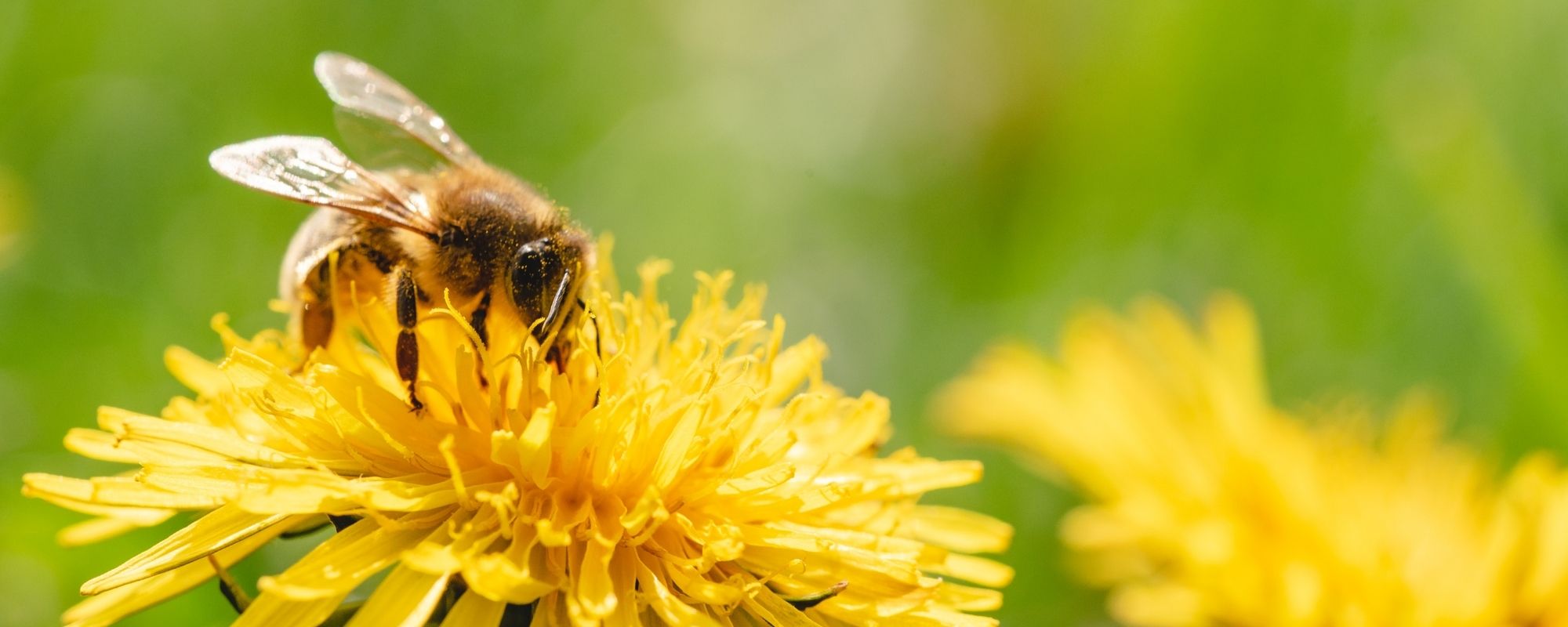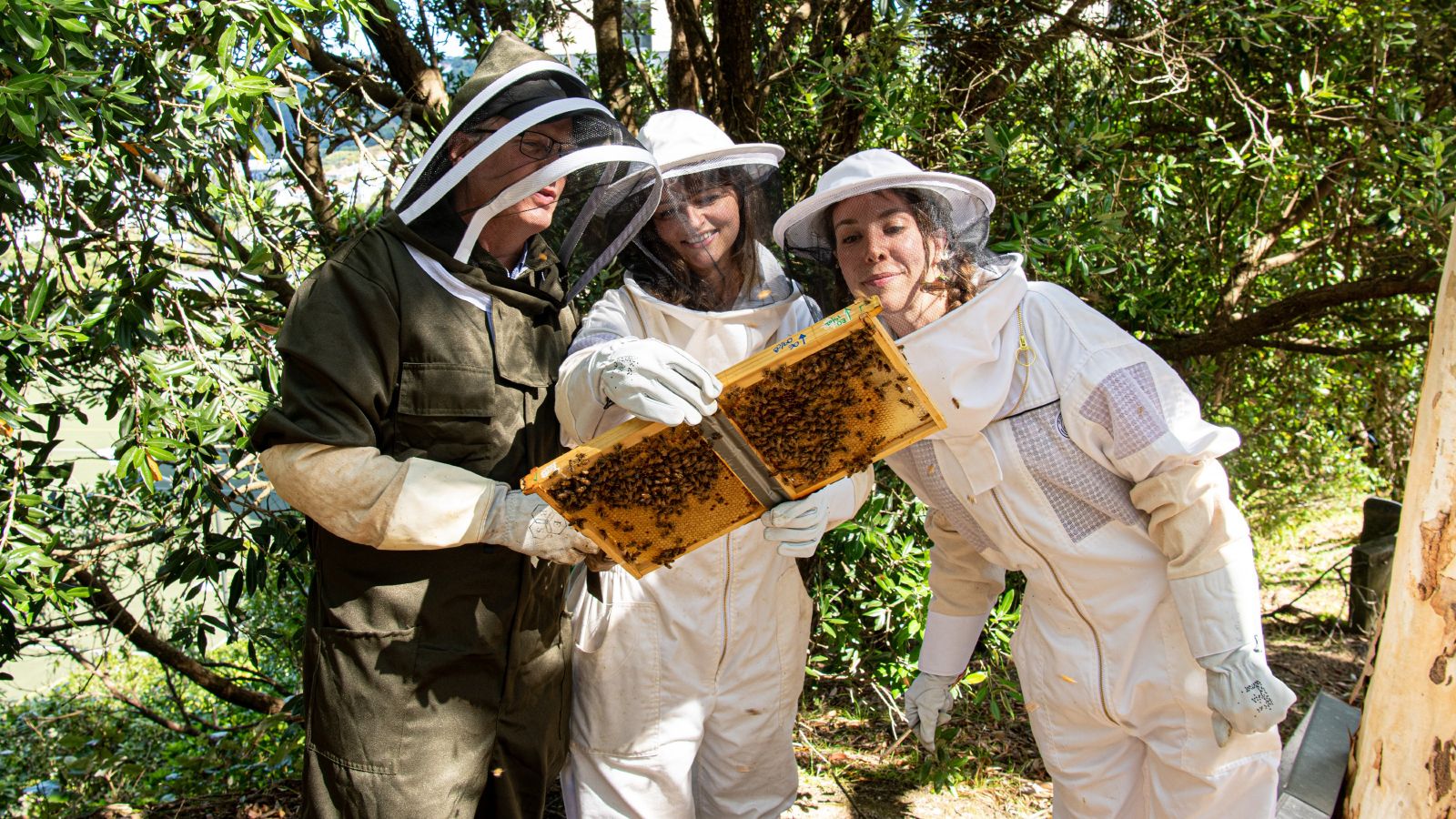Beehives on campus
Check out how researchers are finding ways to defend bee populations from Varroa mite right here on campus.

Bee a great supporter
Bumblebees, Honey bees and other insect pollinators are in dramatic global decline. They are essential for the reproduction of an estimated 90% of flowering plants and 33% of human food crops. Bees are estimated to be worth $5 billion a year to the New Zealand economy – and that’s not including the priceless contributions they make to our gardens and parks.
Here’s how you can help our bee population:
- Plant bee-friendly flowers in your garden or on your balcony or windowsills
- Make a bee café or insect hotel
- If you need to spray your garden, do it very early in the morning or after sunset
- Provide a water source with stones or twigs in it for bees to stand on while drinking
- Let your herbs flower and go to seed at the end of summer
- Delay mowing the lawns so bees can feed on the dandelions
- Follow Bee Aware NZ on Facebook
A hive of activity...

These hives include Varroa-resistant bees provided by Jason Prior and Downunder Honey, as well as Italian honey bees that are commonly reared throughout New Zealand.
“The problem is that there is only a handful of treatments available for Varroa, and there is evidence the mites are becoming resistant to the treatments. The chemicals used in current treatments can also be harmful to people and to bees in the process of killing the mites.” Says bee-researcher, Tessa Pilkington.
To prevent the devastation of honey bee populations, new treatments for the Varroa mite are urgently needed. Through their PhD research, Zoe Smeele, Rose McGruddy, and Tessa hope to contribute to the development of these new treatments. “Zoe and I are testing a new way of treating Varroa mites and one of the viruses they carry, known as deformed wing virus,” Rose says. “Our treatment uses RNA to target the mites. We hope this will lead to a more targeted and effective treatment, as well as one that avoids harmful chemicals and is better for people and planet. This RNA technology is highly targeted to the Varroa, leaving the bees unaffected.”
Tessa’s research involves investigating bee colonies that show a natural resistance to Varroa. This research could lead to the breeding of honey bees resistant to the mites.
“Our research will ideally contribute to promoting global food security, given that effective and sustainable management of honey bees is critical for food production,” Tessa says.
Rose and Zoe are working with a biotech company in the United States called Greenlight Biosciences to turn their research into real-world and safe solutions for the Varroa mite problem. Their work is also part of the Biological Heritage Programme of the National Science Challenge, which aims to develop next generation and safe pest control approaches. Tessa’s research is supported by Callaghan Innovation. As well as providing the bees, Jason Prior is also an industry collaborator on the Callaghan-funded project.“I’m particularly excited about the real-world applications of my research to solve a major problem for the beekeeping industry,” Tessa says.
“Having access to honey bee colonies on campus is an essential part of our research. Logistically, it would be incredibly difficult to complete our experiments without easy access to beehives. I also truly hope that having them on campus for people to observe (from a safe distance) can bring some environmental awareness and perhaps stimulate some general curiosity in people’s lives,” Zoe says.
Zoe, Rose, and Tessa are working with Professor Phil Lester from the School of Biological Science, and Rose and Tessa are co-supervised by Dr John Haywood from the University's School of Mathematics and Statistics.
